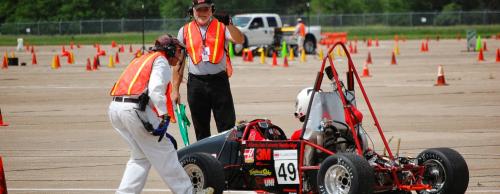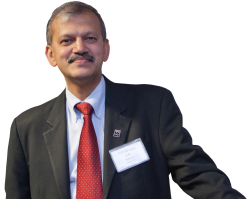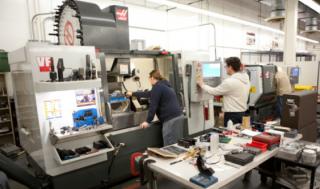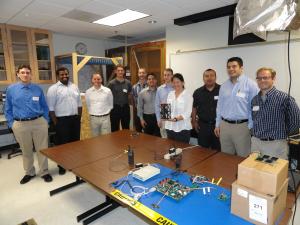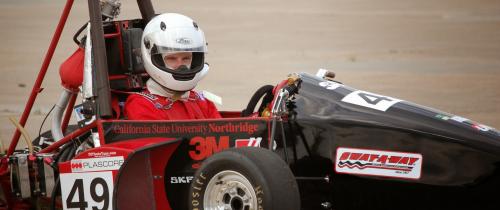 When it comes to auto racing, Lincoln, Nebraska, may not have the same cachet and name recognition as Indianapolis, Laguna Seca or Le Mans, but in June 2013, it became a center of automotive excellence when CSUN’s team joined 79 others there from around the world to compete in the 2013 Formula SAE Car competition.
When it comes to auto racing, Lincoln, Nebraska, may not have the same cachet and name recognition as Indianapolis, Laguna Seca or Le Mans, but in June 2013, it became a center of automotive excellence when CSUN’s team joined 79 others there from around the world to compete in the 2013 Formula SAE Car competition.
The concept behind the Formula SAE competition, which is sponsored by SAE International (formerly the Society of Automotive Engineers), is that a fictional manufacturing company has contracted with a design team to develop a small Formula-style race car. Each student team designs, builds and tests a prototype based on specific rules. Cars are evaluated on static and dynamic events.
In the static events, CSUN’s 22-member team did exceptionally well, ranking second overall in terms of cost.
“The team did a good job of writing their report and presenting it,” says Stewart Prince, professor of mechanical engineering, who advises the team. “And in terms of performance, the car they brought was very cost-effective.”
In dynamic events, the CSUN team ranked ninth in fuel economy and 15th overall in terms of endurance, which measures how far the car can go before it breaks. The team’s overall ranking for the competition was 17, in the top 20%.
“The objective in the students’ minds is to win, but in reality it’s to do as well as we can,” Prince says. “We’re competing against teams from abroad that have a lot of money. We have to look at our student body and the resources we have and figure out how to maximize the points of the competition, so we focus on static events and presentations.” Some teams, he says, neglect the static events but produce super high-performance vehicles—an approach that doesn’t work at CSUN, where money and facilities are limited. “So we make a relatively inexpensive but high-performance car and focus on the static events,” he explains. “That’s our focus: balance.”
A message from the Dean
February 6, 2014Industry partnerships – HAAS
February 6, 2014Industry Partnerships – Jet Propulsion Laboratory
February 6, 2014
Leave a reply Cancel reply
-
College Industry Advisory Board Members
November 30, 2012 -
CECS team makes the grade at SME AeroDef Challenge
February 20, 2015 -
Art of Innovation Conference looks at the future
April 6, 2017

